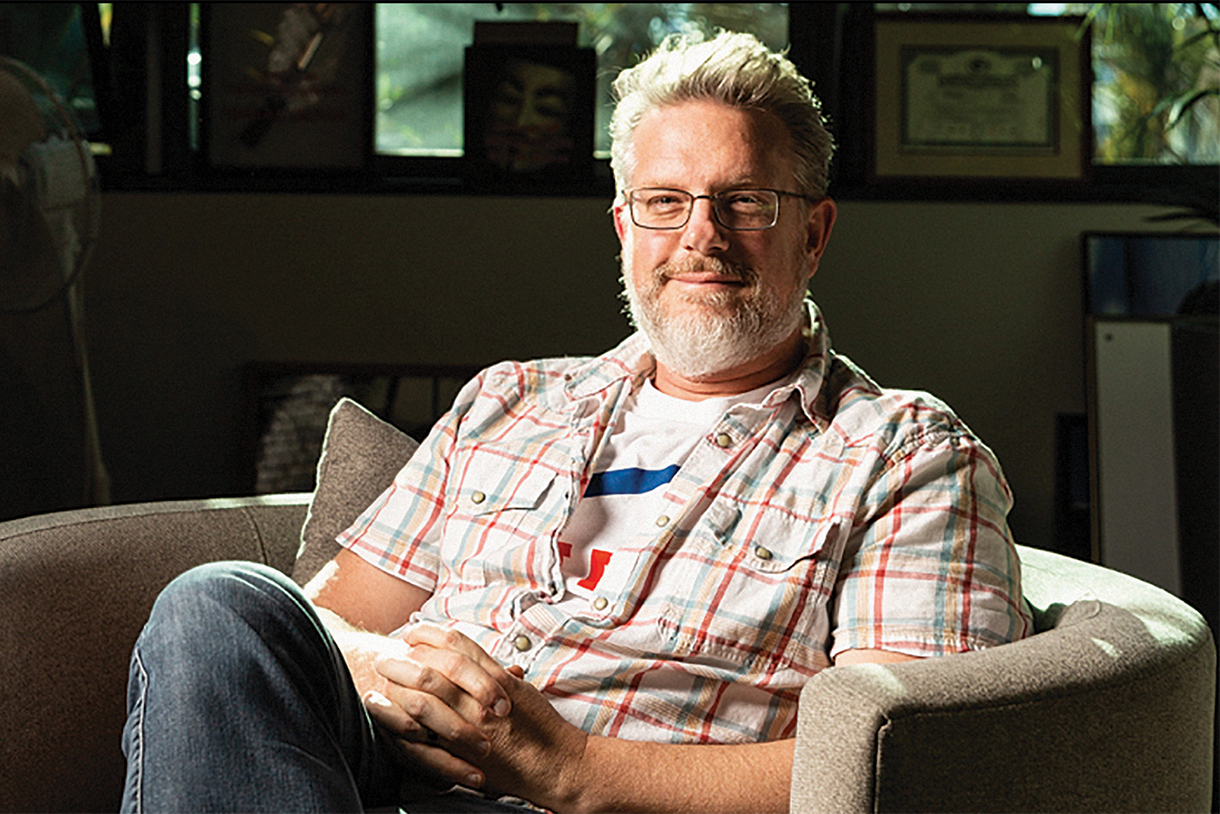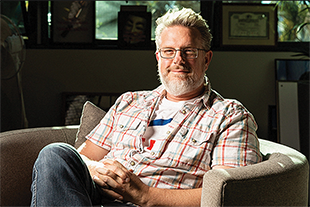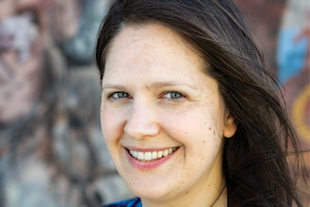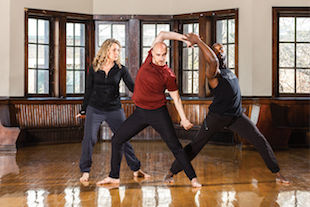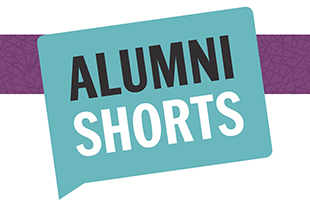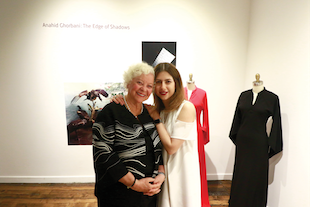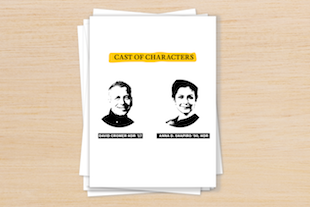Dan Asma '92
What's the Big Idea?
You've seen a Buddha Jones trailer. Now meet the alumni behind the scenes.
“Movie trailers are really the only kind of advertising where you get to sample the product,” says Dan Asma ’92, owner of media company Buddha Jones. “When you see a commercial for Coca-Cola, you can’t really taste the Coca-Cola. But when you see a trailer, your goal is to communicate the feel and flavor of that movie.”
Over the last 15 years, you’ve probably seen Buddha Jones work without even realizing it. IT, Wreck-It Ralph, Ocean’s 8, Wonder Woman, Get Out, Suicide Squad, Moana, Captain America, Mother!, The Wolf of Wall Street—the list goes on and on. Since 2001, Asma has run Buddha Jones with an eye for creativity and collaboration. And the company has grown beyond movie trailers; today, they make trailers for video games, television, and streaming services.
Of course, in 2019, trailers aren’t just in movie theaters. They’re on television and between YouTube videos and in 60-second Instagram snippets. DEMO visited Buddha Jones’ Los Angeles offices in March to get the scoop on how the company has stayed on the cutting edge of movie trailers while shaping the direction of Hollywood storytelling.
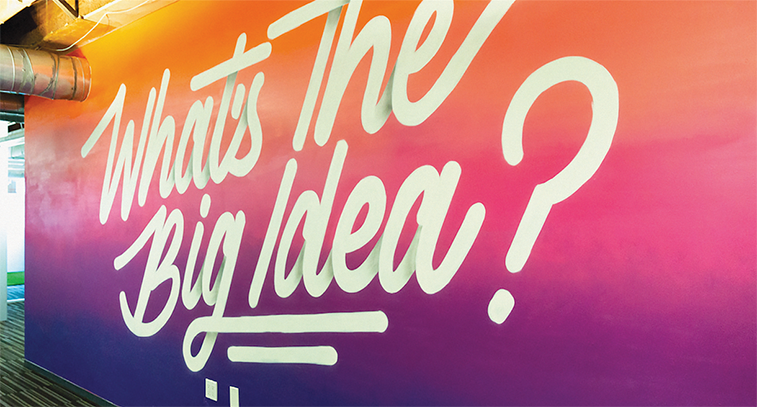
The Birth of Buddha Jones
2003 was a bad time to start an agency. The Los Angeles market was crowded with trailer shops. But Asma and the other three founders came from a variety of company backgrounds, and they were fed up with a singular, solo approach to creativity.
They had an idea: what if they founded a media marketing company built on creative collaboration? “What we figured was, let’s bring together a small but creatively nimble group of people to do unique editorial, storytelling, and writing,” he says. “We do not operate from the place that we’re the smartest people in the room. We want to be very, very open to ideas. That was always kind of the philosophy of the agency.”
The name Buddha Jones came after a night of dinner and drinking. Buddha points towards the spiritual: an evolved state of mind. Jones points to the practical: the everyday responsibility of getting things done. “The idea was to come up with a name that inferred a real sense of fun in the work,” says Asma. “Because you know it is—being creative is a joyous process.”
When Asma graduated from Columbia in 1992, he was thrilled by the industry shifts in non-linear editing. In the past, cutting a trailer involved literally cutting and splicing film. Now digital programs, like Avid, allow editors to be faster and more flexible than ever before. During his first LA job as a production assistant, Asma got to see how editing technology worked in the real world. “There is this special magic that happens when you’re telling a story and the software’s really empowering you,” he says.
The first trailer Buddha Jones ever produced was for the 2005 hip-hop drama Hustle and Flow. Today, the Buddha team crafts marketing campaigns for television, streaming, social media, and video games. They also create motion graphics for movie titles and logos. When a lightning-struck DC Comics logo or the curling metallic letters for Fantastic Beasts and Where to Find Them appear on screen, that’s Buddha Jones’ work.
The Buddha Jones philosophy allows for a mashup of productivity and play: an all-hands-on-deck mentality that lets employees explore new creative challenges. Buddha Jones editor Bryan Coleman ’07 was drawn to the opportunities that his job brings.
“I always have opportunities to flex different creative muscles every day,” says Coleman. “Sometime the deadlines are a little crazy, but when you’re in the thick of it and you’re in the zone, there is that thrill of having the creative fire really burning.”

Keeping It Columbia
Caitlin Nordigian ’11 always wanted to make movie trailers. “When I was a kid, I loved seeing trailers, especially in the movie theater,” she says. “It was amazing to watch a trailer and get that goosebumps feeling. I always wanted to just have that feeling over and over and over again.”
Today, Nordigian is an editor at Buddha Jones, where she’s worked on everything from the reveal trailer for video game Assassin’s Creed Odyssey to Netflix’s Glow trailers. She joins six other alumni who work on the Buddha Jones team.
“I get a very strong sense of real discipline and passion from Columbia students,” says Asma.
Gamer capture artist and assistant editor Mohamed Nazar ’16 first heard of Buddha Jones when Asma spoke on campus his sophomore year. When Asma came back during his senior year, Nazar specifically requested to work on an alumni video featuring Asma—and start networking with the head of the company where he hoped to work after graduation. They hit it off, and Asma offered advice about moving to LA and jumping into the business. “I just really appreciated somebody wanted to take the time out of their day to help me out,” Nazar says. When he moved to Los Angeles, he hit up Asma again—and Buddha Jones happened to be hiring.
The Buddha Jones offices feel like a playground. Visit the Buddha Bar to mix a Friday afternoon cocktail, or cozy up in the courtyard’s Airstream trailer for a lunch break. Even the music in the common areas comes from a company-wide collaborative Spotify playlist. It’s a little Willy Wonka: a space where art, work, and fun combine for unexpected results.
Building a vibrant creative space was very much intentional. “When people are able to break away from their work to socialize or [discuss projects…] it lets them feel like they’re very much integrated with each other,” says Asma.
“I love how collaborative it is,” says Nazar. “We’re all working together on a central goal, but at the same time everyone is seen and heard. Everybody’s creative input is valued, all the way from the bottom to the top.”
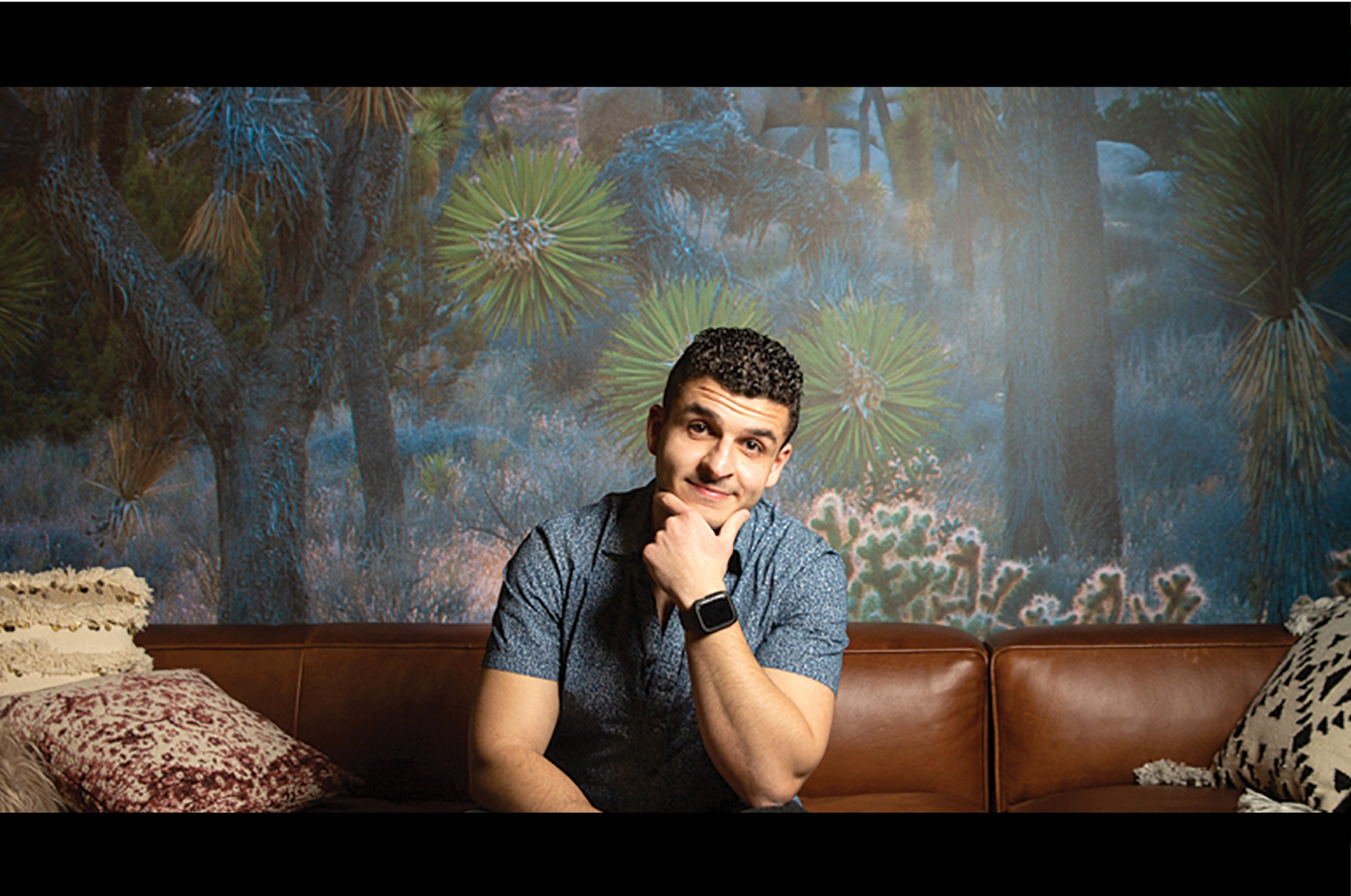
Changing the Game
A lot of considerations go into a good trailer: music and sound design, transitions, motion graphics, narrative, and even different cuts for different platforms and audiences. Buddha Jones handles it all.
“Trailers have developed into their own art form, with their own styles and conventions and language,” says Asma. “To be playing in that space allows you to have an impact on it.”
Right now, action trailers tend to follow a particular staccato rhythm. Take, for example, a recent Buddha Jones trailer for Fast & Furious Presents: Hobbs and Shaw. Quick cuts of car crashes and karate chops are combined with a kitschy soundtrack—War’s iconic funk song “Why Can’t We Be Friends.”
“What leaves a very big impact is the way it’s rhythmically cut,” says Asma. “Everything lands at the right time— that’s an example of a convention that is part of the art form.”
As Buddha Jones continues to grow, Asma hopes students see this line of work as a stable creative career. “I wish there were more opportunities for students to gain that information earlier so that by the time they’re maybe a junior, they’re able to say, ‘Oh, I want to edit for trailers. This is the world I want to live in. These are the styles and rhythms and tones that I want to be able to command, to make it work, and to create.’”
